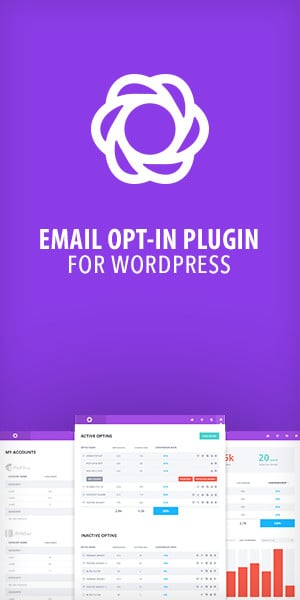Open-source tools offer developers tremendous flexibility and potential for customization. You can tailor these tools to fit your specific needs, enhancing productivity and creating unique solutions. By modifying open-source software, you gain control over features, functionality, and integration with other systems.
Customizing open-source tools involves understanding the codebase, making modifications, and contributing back to the community. Start by thoroughly reviewing the project’s documentation, including README files and contribution guidelines. Familiarize yourself with the programming language and architecture used. Create a local copy of the repository and set up a development environment to experiment with changes.
When customizing, focus on your specific requirements. Modify existing features, add new ones, or remove unnecessary components. Test your changes thoroughly to ensure they don’t introduce bugs or conflicts. Consider sharing your improvements with the open-source community by submitting pull requests or creating forks. This approach allows you to benefit from others’ expertise while contributing to the tool’s ongoing development.
Understanding Open-Source Tools
Open-source tools provide developers with powerful, customizable software solutions. These freely available resources offer transparency, flexibility, and community-driven innovation.
Defining Open Source
Open-source software grants users access to its source code. You can view, modify, and distribute the code as needed. This transparency allows for peer review, security audits, and collaborative improvements.
Open-source projects often follow specific development models. The most common is the distributed model, where multiple developers contribute remotely. This approach fosters innovation and rapid problem-solving.
Key characteristics of open-source tools include:
- Free to use and modify
- Publicly accessible source code
- Community-driven development
- Collaborative bug fixing and feature additions
Types of Open-Source Licenses
Open-source licenses define how you can use, modify, and distribute the software. Common license types include:
- GPL (GNU General Public License): Requires derivative works to be open source
- MIT License: Permits commercial use with minimal restrictions
- Apache License: Allows use of the software for any purpose, including commercial
Each license has unique terms. You should review the specific license for any open-source tool you plan to use or modify. This ensures compliance and avoids potential legal issues.
Community and Contribution
Open-source communities are the backbone of these projects. You can engage with these communities through various channels:
- GitHub repositories
- Mailing lists
- Forums
- IRC channels
Contributing to open-source projects offers several benefits:
- Skill development
- Networking opportunities
- Portfolio building
- Giving back to the community
To start contributing, you can:
- Report bugs
- Suggest features
- Improve documentation
- Submit code changes (pull requests)
Many projects welcome newcomers and provide guidelines for contribution. You’ll find these in files like CONTRIBUTING.md or in the project’s documentation.
Customization Techniques
Customizing open-source tools requires a combination of technical skills and creativity. By following these key techniques, you can tailor software to your specific needs and enhance its functionality.
Setting Up the Development Environment
Start by creating a dedicated workspace for customization. Install the necessary development tools and dependencies required for the specific open-source project. Clone the source code repository to your local machine using Git. Set up version control to track your changes and collaborate with others.
Familiarize yourself with the project’s build system and configuration files. Install any required compilers, interpreters, or runtime environments. Configure your integrated development environment (IDE) with appropriate plugins and settings for the programming language used.
Create a separate branch for your customizations to keep the original codebase intact. This allows you to easily merge upstream changes and maintain your modifications.
Modifying the Source Code
Before making changes, thoroughly review the existing codebase and documentation. Identify the specific areas that need customization. Use code search tools to locate relevant files and functions.
Make small, incremental changes and test them frequently. Follow the project’s coding standards and style guidelines to maintain consistency. Use meaningful variable names and add comments to explain your modifications.
Implement new features by adding new classes, methods, or modules. Modify existing functions to alter their behavior or add new parameters. Be cautious when changing core functionality to avoid breaking dependencies.
Utilize design patterns and best practices to ensure your customizations are maintainable and scalable. Consider performance implications and optimize your code when necessary.
Creating Custom Plugins and Extensions
Many open-source tools offer plugin architectures or extension points. Leverage these to add new functionality without modifying the core codebase. This approach makes it easier to maintain your customizations across different versions.
Study the plugin API documentation and existing examples. Create a new plugin project following the recommended structure. Implement the required interfaces or extend base classes provided by the framework.
Develop your custom logic within the plugin, adhering to the tool’s guidelines. Use dependency injection and loose coupling to make your plugin modular and reusable. Test your plugin thoroughly in isolation before integrating it with the main application.
Package your plugin according to the project’s specifications. This may involve creating configuration files, metadata, or distribution archives.
Applying Patches and Updates
Stay informed about upstream changes and security updates for the open-source tool. Regularly check the project’s issue tracker and release notes for important information.
When applying patches, carefully review the changes and their potential impact on your customizations. Use patch management tools to apply updates smoothly. Resolve any conflicts that arise during the patching process.
Test your customized version thoroughly after applying patches to ensure compatibility. Update your documentation to reflect any changes in behavior or new features introduced by the patches.
Consider contributing your customizations back to the open-source project if they provide general value. Follow the project’s contribution guidelines and submit pull requests for review.
Documentation and Support
Maintain detailed documentation of your customizations. Include installation instructions, configuration settings, and usage examples. Document any known limitations or potential issues.
Create user guides and administrator manuals specific to your customized version. Use clear, concise language and provide step-by-step instructions where appropriate.
Set up a support system for users of your customized tool. This may include a ticketing system, forum, or dedicated communication channels. Provide timely responses to user inquiries and bug reports.
Regularly update your documentation as you make changes or add new features. Consider creating video tutorials or screencasts to demonstrate complex workflows.
Frequently Asked Questions
Customizing open-source tools requires understanding key processes, legal considerations, and best practices. Proper techniques for modification, contribution, and version control are essential for successful customization.
What steps are involved in editing an open-source software project?
First, fork the project repository to create your own copy. Clone the forked repository to your local machine. Make your desired changes using a code editor like Visual Studio Code. Test the modifications thoroughly to ensure functionality.
Commit your changes with clear, descriptive messages. Push the updates to your forked repository. If you want to contribute back, create a pull request to the original project.
Is there any legal restriction on modifying open-source software?
Open-source software typically allows modification, but you must adhere to the specific license terms. Read the project’s license carefully. Some licenses require you to share your modifications under the same terms.
Attribution to the original authors is often necessary. Certain licenses may restrict commercial use or require you to disclose source code changes.
What are the best practices for customizing open-source tools for personal use?
Document all changes you make to the codebase. This helps you track modifications and understand their impact. Create a separate branch for your customizations to keep them isolated from the main codebase.
Regularly sync your fork with the upstream repository to stay updated. Test your changes thoroughly to avoid introducing bugs. Consider creating configuration files for personalized settings rather than modifying core code.
How can one contribute customizations back to an open-source project?
Review the project’s contribution guidelines before submitting changes. Ensure your modifications align with the project’s goals and coding standards. Create a detailed pull request explaining the purpose and implementation of your changes.
Be open to feedback from project maintainers. Address any comments or requested changes promptly. Participate in discussions about your contribution to clarify any questions.
What tools are recommended for managing changes to an open-source codebase?
Git is the most widely used version control system for managing code changes. GitHub, GitLab, and Bitbucket are popular platforms for hosting and collaborating on Git repositories.
Use a code editor with Git integration like Visual Studio Code for seamless version control. Consider using Git GUI clients like GitKraken or SourceTree if you prefer visual interfaces.
How do you ensure compatibility when customizing open-source software?
Thoroughly test your modifications against different versions of dependencies. Keep your customizations modular to minimize conflicts with future updates. Stay informed about the project’s roadmap and upcoming changes.
Use automated testing tools to catch compatibility issues early. Document any compatibility requirements or limitations introduced by your customizations. Consider containerization technologies like Docker to isolate your customized environment.




